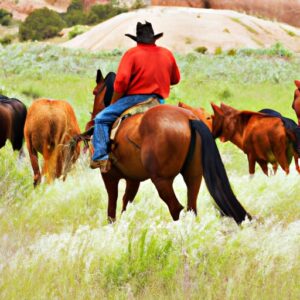Apache Silent Movement in Tall Grass and Brush Techniques for Moving Undetected in Dense Vegetation
Introduction
The wind rustles softly through the tall grass, creating a symphony of whispers that masks the presence of those who move within it. Apache warriors, guided by time-honored wisdom, perfected the art of silent movement, blending seamlessly with the natural world. In an age where stealth determines success, understanding these ancient techniques proves invaluable, whether in surviving harsh conditions or navigating the modern wilderness.
Apache culture teaches respect for the land and its creatures, cultivating a deep connection that enhances their survival skills. Among the techniques passed down through generations, the silent movement in dense vegetation stands out as a crucial skill. This stealth allows the warrior to approach unseen and unheard, transforming oneself into a mere shadow in the brush.
Learning to move undetected requires practice and patience. Each step must be deliberate, each breath controlled, allowing the environment to swallow sound and presence. Embracing the lessons of the Apache cultivates not just a method of movement but a mindset of unity with nature.
As we delve into the techniques of silent movement, we will explore the principles that guide the Apache way. From understanding the terrain to mastering body mechanics, these skills are timeless. By soaking in the knowledge of our ancestors, we step toward greater mastery over our environment.
Historical Context
The Apache people have long been renowned for their deep understanding of the environment and their exceptional ability to navigate diverse terrains. Historically, they thrived in regions ranging from vast deserts to dense forests, developing survival techniques that echoed their profound connection to nature. In these conditions, silence became not just a strategy, but a way of life, essential for hunting and evading both enemies and wildlife.
Among the Apache, moving undetected through tall grass and brush became an art form, passed down through generations. R techniques relied on observation, respect for the land, and mastery of body movements. This wisdom encompassed an awareness of sound, scent, and sight, allowing them to blend seamlessly into their surroundings.
Apache elders often conveyed this knowledge through stories, emphasizing the importance of patience and adaptability. These narratives instilled a sense of pride and identity in younger generations, fostering a strong bond with ancestral traditions. So, the Silent Movement techniques developed over centuries, reflecting not only practical skills but also a philosophical approach to coexistence with nature.
Also, these techniques served as a testament to Apache resilience in the face of adversity. The ability to move silently through dense vegetation allowed them to navigate challenges, whether in war or in hunting for food. This mastery of stealth became integral to their survival, underscoring the importance of cultural heritage in shaping practical skills.
Apache Silent Movement Techniques Dense Vegetation
An Apache Story
The Apache have long excelled in moving through the dense landscapes of their homeland. This skill was vital for hunting, gathering, and evading conflict. Their understanding of the environment shaped their methods, allowing them to traverse tall grass and brush undetected. Silent movement became a blend of art and necessity, rooted deeply in their culture.
Apache techniques for stealth rely on keen observation and an innate connection to the land. They identify the rhythm of the surroundings, tuning into the sounds of nature to mask their presence. By shifting their weight and employing careful footfalls, they glide silently through the vegetation. Each movement is deliberate, ensuring minimal disturbance to the environment.
The knowledge passed down through generations emphasizes patience and awareness. Apache warriors study the behavior of animals, learning how to blend in seamlessly. They adapt their approach based on weather conditions and terrain, using the elements to their advantage. This adaptability enhances their ability to remain undetected.
- Utilize the natural camouflage of clothing.
- Practice silent footwork by stepping on softer ground.
- Employ natural barriers to shield movements.
- Listen closely to the environment, moving when it is most quiet.
Mastering these techniques requires mindfulness and respect for the land. The Apache view their surroundings not just as a backdrop, but as a living entity. Through this connection, they foster an understanding of how to move as one with nature, leaving little trace behind. Silent movement is, therefore, both a skill and a reflection of their deep-rooted wisdom.
In the heart of the Chihuahua Mountains, the sun dipped below the horizon, casting an amber glow over the dense foliage. A chill drifted through the tall grass, whispering secrets of the land to those who knew how to listen. Among the Apache people, Kaywaykla, a skilled warrior, prepared himself as shadows gathered, knowing that threats often lurked unseen. His heart thumped with the rhythm of the earth, and with every fiber of his being, he vowed to protect his tribe.
The wind carries our stories, China, he murmured to his companion, who stood beside him, her keen eyes scanning their surroundings. Tonight, the whispers will guide us. China, a wise soul with a deep understanding of nature, nodded, her long hair flowing like the surrounding grasses. We must move like the shadows themselves, she replied. As they crouched low, merging with the earth, every sound–a rustle, a sigh–became a part of their existence.
With meticulous care, Kaywaykla demonstrated the art of silent movement. He taught China to choose her footsteps wisely, placing her weight gently on the softer patches of ground, where leaves made little noise. Listen to the rhythm of the night, feel the pulse of the grass, he instructed, his voice barely above a whisper. R bodies moved fluidly, a dance of stealth as they traversed the thick underbrush, even as the scents of mesquite and sagebrush filled their lungs. Soon they spotted IH-tedda, a distant threat to their village, unaware of their approach.
Patience, friend, Kaywaykla urged as they crept closer, measuring the distance like a hawk calculating the fall of its prey. With a sharp nod, China and Kaywaykla held their breaths, embodying the silence that enveloped them. When the time is right, we strike as one, he added, his voice firm yet calm, embodying the essence of Apache unity.
With the final word, they launched into action, striking fear into the heart of their enemy, who hadn’t sensed their presence until it was too late. The wisdom of stealth and the teachings of their ancestors rang true; they had moved like the whispering wind, invisible yet powerful. The night bathed them in victory, and as the dust settled, they knew their tribe was safe once more.
The grasses swayed in the aftermath, serenading the victory, and the stars twinkled above, as if acknowledging the bravery of Kaywaykla, China, and IH-tedda. R hearts danced in rhythm with the lands heartbeat–a testament to the sacred bond shared among warriors and the earth. We are one with the weave of life, China smiled, realizing the deeper lesson of their journey. The richness of silence held power, a reminder that sometimes the most effective movements are those unseen. What teachings might the land whisper to you, waiting for you to embrace them in your own silent ways?
Practical Applications
Implementing Apache Silent Movement Techniques in Daily Life
Embracing the principles of Apache silent movement can cultivate a sense of awareness and mindfulness in your daily activities. Whether it’s navigating a busy environment or simply moving through your home, these techniques can enhance your stealth and observation skills. Here show to integrate these practices into your life.
Practical Steps for Silent Movement
- Observe Your Environment: Start by noticing details around you. Focus on the texture of the ground, the rustle of leaves, and the presence of obstacles. This enhances your awareness and prepares you for smooth navigation.
- Move Slowly and Deliberately: Instead of rushing, take your time with each step. Practice walking with a slow and controlled pace, ensuring each foot placement is light and mindful to minimize noise.
- Use the Right Footwear: Choose shoes that offer cushioning and have a quiet sole, like soft-soled shoes or even barefoot flexibility. This will help you make less sound as you move.
- Practice Shifting Your Weight: When moving, shift your weight gently from one foot to the other rather than dropping it heavily. This technique is essential when traversing soft ground or dense areas.
- Train in Different Environments: Experiment with walking silently in various settings, such as grass, gravel, or indoors on different surfaces. Diversity in your practice will enhance your adaptability.
- Stay Low and Balanced: Lower your center of gravity slightly as you walk to improve balance and reduce movement strain on your body. Think of how a cat moves; this also helps in avoiding detection.
- Be Patient and Mindful: Cultivate a mindset of patience during your movements. The more you practice being aware of your body and surroundings, the more instinctive this will become.
Potential Challenges and How to Overcome Them
One common challenge is the habit of rushing through tasks or environments, often leading to noise and distraction. To counter this, consciously slow down your movements, turning it into a fun challenge rather than a chore. Another difficulty might be maintaining focus in busy areas filled with distractions. To overcome this, practice in quieter settings first, gradually moving to busier environments as your skills improve. You could also benefit from guided focus exercises to enhance concentration.
Tips for Maintaining Consistency
Set a routine by incorporating silent movement exercises into your daily activities. For example, designate a time each day for practice, like during early morning walks or while doing household chores. Engage friends or family to practice together, creating a supportive community that encourages everyone to improve. Also, consider journaling your experiences and observations to reflect on your growth and maintain motivation.
How will you incorporate these principles into your daily routine, and what areas of your life do you think could benefit most from silent movement techniques? Start today and notice the small changes in your awareness and presence!
Apache Silent Movement Techniques Dense Vegetation
Conclusion
In summary, the Apache Silent Movement techniques emphasize the importance of patience, awareness, and respect for nature. By mastering foot placement, learning to move with the wind, and utilizing the environment to conceal one’s presence, individuals can navigate dense vegetation undetected. These skills not only enhance stealth but also deepen ones connection to the surroundings.
Consider applying these principles in your outdoor adventures. Observe your environment thoughtfully, and practice the techniques with intention. Whether hiking, camping, or engaging in wildlife observation, you can foster a deeper appreciation for the Apache way of moving through the world.
To move quietly is to understand the heartbeat of the earth.
Embrace the wisdom of the Apache. Share these techniques with others and encourage them to explore the beauty of nature with respect and mindfulness. Strengthening these skills will enrich both individual experiences and collective respect for our shared heritage.
More Resources
Dive deeper into the fascinating world of Apache wisdom and its modern applications. Explore these thought-provoking questions to expand your understanding of the concepts discussed in this article.
Explore Further with Google
- How can we preserve tribal ceremonies in our sustainable agriculture?
- How can we learn from indigenous knowledge in today’s world?
- How can we celebrate traditional practices in our intergenerational knowledge?
Discover Insights with Perplexity
- How can traditional ecological knowledge inform modern conservation efforts?
- What ancient wisdom can we apply to modern life?
- What lessons from the past can guide our sustainable future?
By exploring these questions, you’ll gain a richer appreciation for indigenous cultures, environmental stewardship, and mindfulness practices. Each link opens a gateway to deeper knowledge, helping you connect ancient wisdom with contemporary life.
Thank you for reading!







